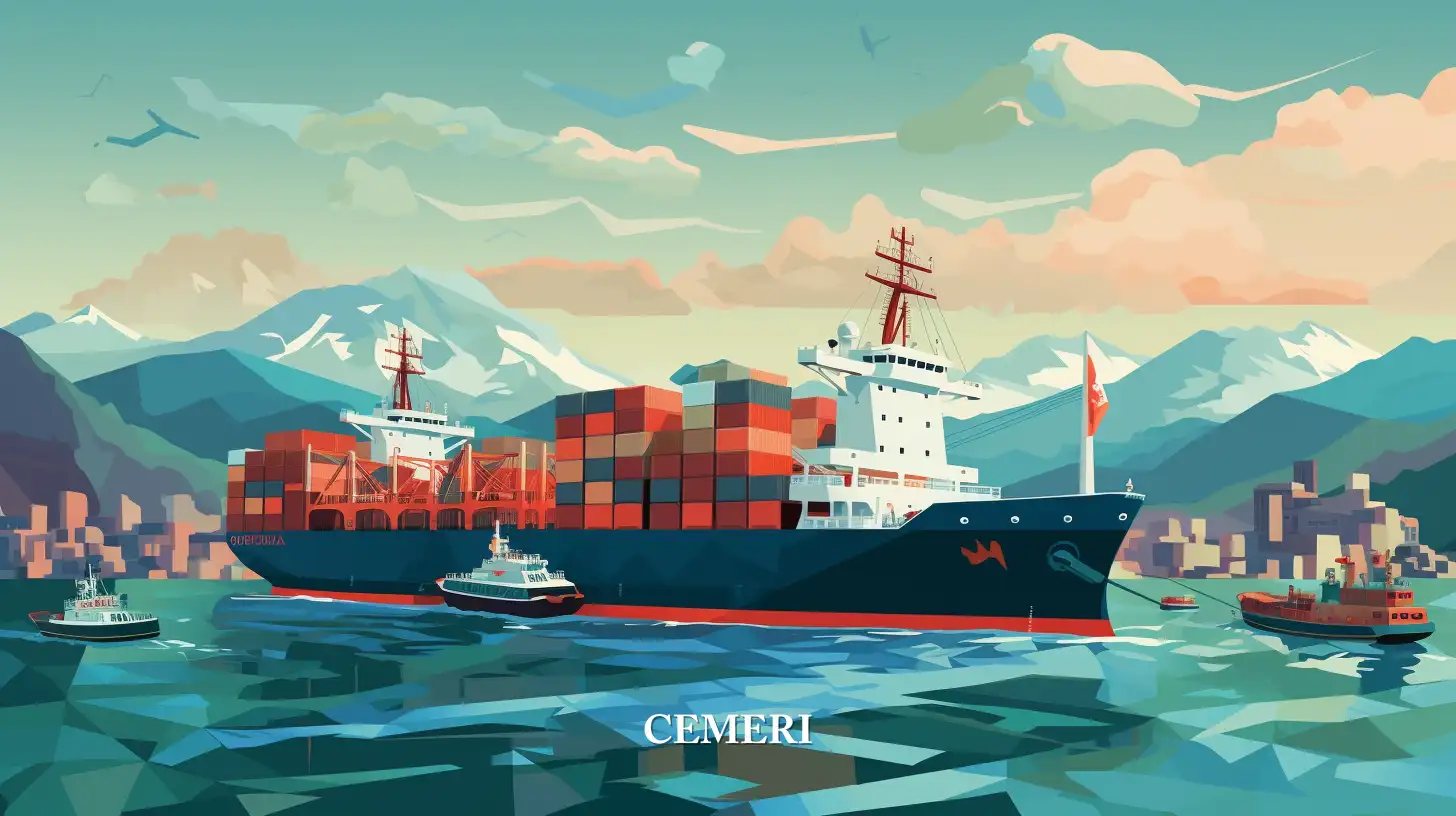Analysis
Raquel Carranza
The 5 most important foreign trade agreements of the American continent
- Do you know the most important agreements on the American continent in terms of foreign trade?

Trade is undoubtedly the basis of the economy and at an international level it is extremely important for States and exporting or importing businessmen to have a favorable position; for this reason, this economic aspect is embodied in many treaties, agreements and negotiations between the actors of the international community.
The agreements establish the will of two or more countries to improve or treat an issue or phenomenon together, and almost always the economic aspect is involved, either to benefit trade or increase their economic relations in such a way that both have a largest and most dynamic market.
At present, there are various types of trade agreements and this will depend on the number of parties involved or the scope that those involved wish to achieve, since they can be bilateral or multilateral; as well as setting exact objectives such as free trade agreements or partial scope agreements; and even for purposes semi or in favor of integration, such as a customs union, common market or an economic union.
However, it is essential to know the basics of foreign trade itself. The agreements that set the rules of the game and have served as an international parameter between States and companies that interact commercially to export and import. For this reason, the five most important foreign trade agreements in America with a global scope will be shown:
The General Agreement on Customs Tariffs and Trade - GATT (1947 and 1994)
The GATT is par excellence the basic agreement on customs and commercial problems that hindered economic exchange or promoted unfair competition, likewise, it raised the need for an international organization dedicated to trade.
The 1947 agreement covers from the outset all that is international merchandise trade in a post-war context and had the objective of liberalizing trade, reducing protectionism (which to some extent had formed part of the causes of war conflicts) and finding measures that benefit the main markets. This first agreement had eight rounds of negotiation between 24 countries and touched on issues such as services, non-tariff measures, tariffs, antidumping measures, intellectual property, dispute settlement, agriculture and textiles. In short, the regulations trade basics.
The 1994 agreement mentions issues such as the removal of restrictions; grants; freedom of transit, which consists of the right that an exporter has to transit his merchandise through the territory of a third country, in order to reach the import destination.
In the same sense, customs valuation is covered; the national treatment of imported products with their taxation and internal regulation; antidumping and countervailing duty; as well as the most favored nation treatment, which undoubtedly guarantees greater security to exporters that their merchandise will not be discriminated against based on the place of origin and there is less unfair competition.
The Marrakesh Agreement
The Marrakech agreement was the result of a series of negotiations in the Uruguay Round since 1986, updated the GATT of 1947 and established the World Trade Organization (WTO), which to this day is the only international institution competent in regulatory of international trade with 164 members. The WTO was the type of institution that had been modeled on the failed International Trade Organization (ITO) since 1947 with the first GATT agreement.
The agreement sought to liberalize trade, protect trade stability, alleviate future tensions that had implications of this type, and as the preamble to the Marrakesh agreement specifies in paragraph one, trade must "tend to raise living standards, to achieve full employment and a sizeable and constantly increasing volume of real income..." (1994)
Trade Facilitation Agreement – AFC (2017)
This agreement has been one of the most recent and its function is to streamline customs procedures and foreign trade in general, this from an internal approach with transparency of information and education of the exporter and importer, as well as continuous cooperation in the transit of goods.
Another relevant point is the implementation of a single window, which is a system that specifies the delivery of the different documents to a single entry to avoid cumbersome procedures and bureaucratic delays; coupled with technology, it also has the possibility of establishing electronic payments to minimize the time of release and dispatch. Likewise, this reduces misinformation or public abuses to export and import.
Agreement on Subsidies and Countervailing Duties – SMC (1994)
The agreement deals with two very important aspects within commercial relations and possible problems that arise from this interaction, on the one hand, subsidies, which are a type of financial aid from the government or public body with the idea of helping a company for some activity that needs investment.
Grants are like some type of credit or subsidy, but they are not limited to money. In the second sense, it is used so that at a certain point your production or logistics costs drop and, consequently, the export is greater or much more competitive.
The agreement contains a definition of the term that includes three basic elements to be classified as such: it must be a financial contribution, it must be granted by a government or any public body in the territory of a WTO member state, and it must grant a benefit . On the other hand, there are compensatory measures that, as opposed to the subsidy, the government or importing country of the good, increases import duties to dilute the effects of the subsidy applied in the country of origin. This is applied with the intention of not causing harm to domestic producers in the importing country.
The agreement defines the field of application of both measures. Either the limits of a State to grant subsidies and that these do not fall into unfair competition and the requirements for a State to exercise compensatory measures without falling into discrimination.
In summary, the agreement delimits the interventions that the State may have in favor or against as the case may be. It is extremely important the existence of a regulation that avoids misunderstandings by its members, and that avoids unnecessary or arbitrary conflicts.
Kyoto Convention on the Simplification and Harmonization of Customs Procedures (1973)
The Kyoto agreement is one of the main existing customs facilitation agreements and, as its very title announces, it seeks to simplify trade and its procedures.
This agreement has mainly customs implications, but it is impossible to talk about foreign trade without mentioning the customs aspect, since this is part of the core that composes it. The agreement is part of the basic objectives of the World Customs Organization (WCO) together with the Convention on the Harmonized System of Coding and Designation of Merchandise (1983) and tries to reduce the disparities that exist in customs regimes worldwide.
As a consequence of globalization itself, it is a way of generalizing processes and avoiding hindering both large-scale exchanges and protection and cooperation against the illegal trafficking of goods. Likewise, it tries to modernize customs procedures to reduce trade gaps that tend to work against some producers, businessmen and ultimately the State itself, since it is no longer competitive.
In conclusion, all the legal instruments mentioned are part of the systematic progress that the world has tried to make to reduce borders and barriers. Coupled with the fact that the importance of these international agreements in the continent and the world derives both from their adhesion, as well as from the inspiration that many States take to create or modify their national regulations, always with the ideal of facilitating trade abroad.
Sources
Acuerdo de Marrakech. Preámbulo, párrafo 1. 15 de abril 1994.
Definición de subvenciones (2016). informe sobre el comercio mundial 2016. World Trade Organization. https://www.wto.org/spanish/res_s/booksp_s/anrep_s/wtr06-2b_s.pdf
El hito de Marrakech — 25o aniversario de los acuerdos fundacionales de la OMC. (2019).
World Trade Organization. https://www.wto.org/spanish/news_s/news19_s/hist_15apr19_s.htm
Qué es un tratado internacional de comercio – Instituto Europeo de Posgrado. (2018). Instituto Europeo de Posgrado. https://www.iep.edu.es/tratado-internacional- comercio-que-es/
Textos jurídicos de la OMC. (s. f.). World Trade Organization. https://www.wto.org/spanish/docs_s/legal_s/legal_s.htm

